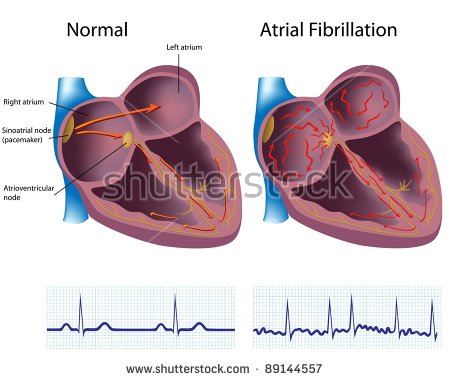
Recently Diagnosed or Relapsed? Stop Looking For a Miracle Cure, and Use Evidence-Based Therapies To Enhance Your Treatment and Prolong Your Remission
Multiple Myeloma an incurable disease, but I have spent the last 25 years in remission using a blend of conventional oncology and evidence-based nutrition, supplementation, and lifestyle therapies from peer-reviewed studies that your oncologist probably hasn't told you about.
Click the orange button to the right to learn more about what you can start doing today.
- You are here:
- Home »
- Blog »
- Multiple Myeloma »
- Cure Multiple Myeloma? Aggressive, Toxic Therapies…
Cure Multiple Myeloma? Aggressive, Toxic Therapies…

“HSCT patients who have survived for at least 5 years post-transplantation are at a fourfold to ninefold increased risk of late mortality for as long as 30 years from HSCT, producing an estimated 30% lower life expectancy compared with the general population.”
No one wants to cure multiple myeloma (MM) more than I do. I am a long-term MM survivor. The challenge is that MM is incurable, according to conventional oncology, and potentially curative regimens (quadruplet regimens discussed below) are highly toxic and can cause nasty short, long-term and late stage side effects.
I know this because I live with-
- chemotherapy-induced cardiomyopathy,
- chemotherapy-induced nerve damage,
- chemotherapy-induced cognitive dysfunction (chemobrain) and
- a lifetime risk of chemotherapy-induced secondary cancers.
My life as a long-term MM survivor is exactly what Smita Bhatia documents in her study linked below.
In the first article linked and excerpted below, Dr. Rafael Fonseca presents the “cure” side of the “cure vs. control debate” in multiple myeloma.
If you follow Dr. Fonseca’s approach, aggressive, toxic, cure multiple myeloma at all costs, type of thinking, you may run smack dap into chronic damage resulting in pain, suffering and a horrible quality-of-life.
In fairness to conventional standard-of-care MM therapy, the average newly diagnosed MM patient is 69 years old and presents with stage 2 or 3 MM, often advanced symptoms. Taking an aggressive approach to the average NDMM patient may offer the best way to stabilize this patient.
However research shows that it is not required to achieve complete remission aka a zero m-spike, all normal blood level counts, in order to live or control MM. Chances are pretty good that you lived for years with an m-spike, above normal freelight chains and possibly even above normal immunoglobulins.
The push for deep remission, discussed by Dr. Fonseca, does not necessary lead to a longer overall survival or length of life.
Please don’t take my word for it. Ask you oncologist if anything discussed in Dr. Fonseca’s article below leads to longer survival or a higher quality of life. It doesn’t.
If you’d like to learn more about evidence-based, non-toxic therapies that cause MM apoptosis (kills MM), scroll down the page, post a question or comment and I will reply to you ASAP.
If you’d like to learn more about evidence-based, integrative therapies- therapies that enhance the efficacy of chemotherapy regimens, post a question below.
Thank you,
David Emerson
- MM Survivor
- MM Cancer Coach
- Director PeopleBeatingCancer
Recommended Reading:
- Surviving Multiple Myeloma- Autologous Stem Cell Transplant-
- Nutrition, Supplementation as Multiple Myeloma Therapy
- Beating Myeloma: “If I Knew Then What I Know Now”
Using MRD to Inform Treatment Decisions in Transplant-Eligible Myeloma
“Rafael Fonseca, MD, discusses several clinical trials that support the use of quadruplet regimens in myeloma, the utilization of MRD in clinical decision making, and future directions for research…
“We really cannot accept a doublet regimen, and perhaps soon we will not accept a triplet regimen as part of frontline therapy for [patients with] myeloma. I’m personally moving toward [approaching treatment in] the frontline [setting] with very effective and intense combinations,” Fonseca said. “It’s clear from multiple clinical trials that the best results happen when you put your best foot forward and you start with the best [therapies] from the get go. Don’t save drugs for later. [Use] the best combination and try to induce the best responses…”
When you look at the groups of patients enrolled in these trials, those who have the deeper responses do better, whether they are measured through the International Myeloma Working Group criteria or through MRD methods, flow cytometry, or next-generation sequencing. Those outcomes really translate into better time-dependent variables, such as would-be progression-free survival and, ultimately, overall survival…
Long-term health impacts of hematopoietic stem cell transplantation inform recommendations for follow-up
“Advances in transplantation techniques and supportive care strategies have resulted in a significant improvement in survival of those who have undergone treatment. However, hematopoietic stem cell transplantation (HSCT) survivors are at risk of developing long-term complications, such as:
- endocrinopathies,
- musculoskeletal disorders,
- cardiopulmonary compromise and
- subsequent malignancies.
These complications have a direct impact on the morbidity and mortality experienced by HSCT survivors. Two-thirds of HSCT survivors develop at least one chronic health condition; while a fifth develop severe or life-threatening conditions. HSCT patients who have survived for at least 5 years post-transplantation are at a fourfold to ninefold increased risk of late mortality for as long as 30 years from HSCT, producing an estimated 30% lower life expectancy compared with the general population. The high burden of morbidity experienced by HSCT survivors makes it critically important that there is standardized follow-up of HSCT survivors at high risk for post-HSCT complications…
Five-year view
It is abundantly clear that HSCT survivors are at an increased risk for chronic morbidity many years after HSCT. It is important to follow these survivors in the longterm in order to determine the lifetime risk of long-term complications. It is also important to understand how pretransplant therapeutic exposures interact with HSCT-related exposures to increase the risk of these complications. Over the next few years, it will also become important to develop a better understanding of the pathogenesis of the adverse outcomes, so that targeted interventions can be developed…”
Treatment of Myeloma: Cure vs Control
“Although not often openly acknowledged, “cure vs control” is the dominant philosophical difference behind many of the strategies, trials, and debates related to the management of myeloma. Should we treat patients with myeloma with multidrug, multitransplant combinations with the goal of potentially curing a subset of patients, recognizing that the risk of adverse events and effect on quality of life will be substantial?
Or should we address myeloma as a chronic incurable condition with the goal of disease control, using the least toxic regimens, emphasizing a balance between efficacy and quality of life, and reserving more aggressive therapy for later…”
In the past decade, thalidomide,10 bortezomib,11–13 and lenalidomide14,15 emerged as effective agents for the treatment of myeloma, producing spectacular results in combination with other known agents in terms of response rate, CR rate, progression-free survival (PFS), and (more recently) overall survival.
Numerous combinations have been developed, resulting in a veritable alphabet soup of clinical trials,16 and drug combinations are vying with each other for the highest response rate (and prominence).17,18 The results obtained with new combinations have indeed been remarkable and have prompted a relatively new philosophy of treating myeloma with the goal of potential cure rather than disease control…


